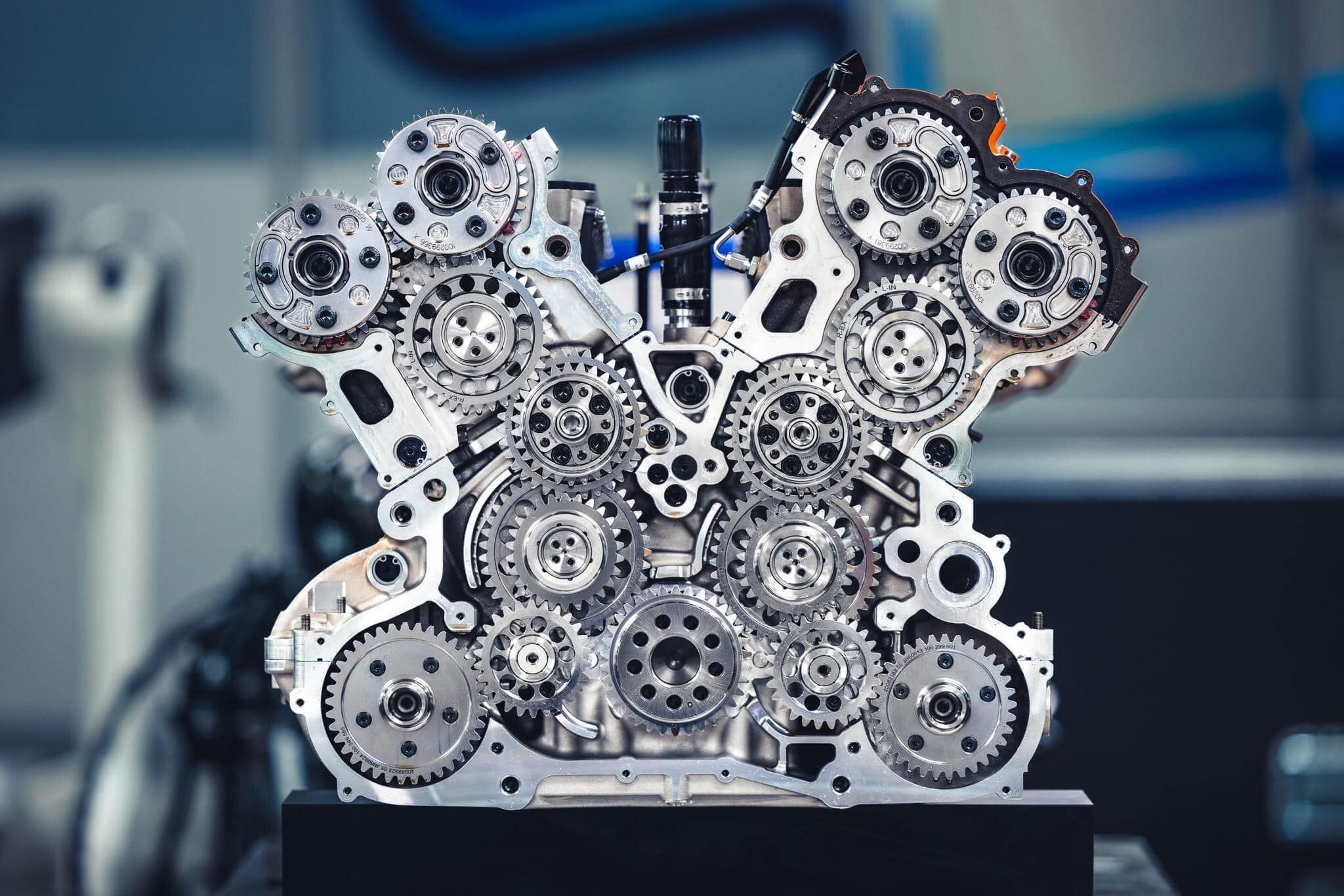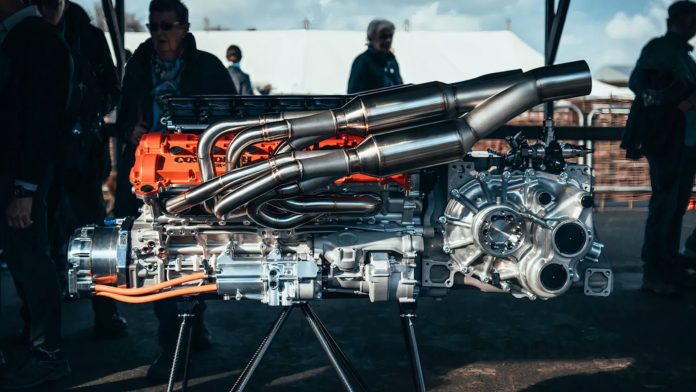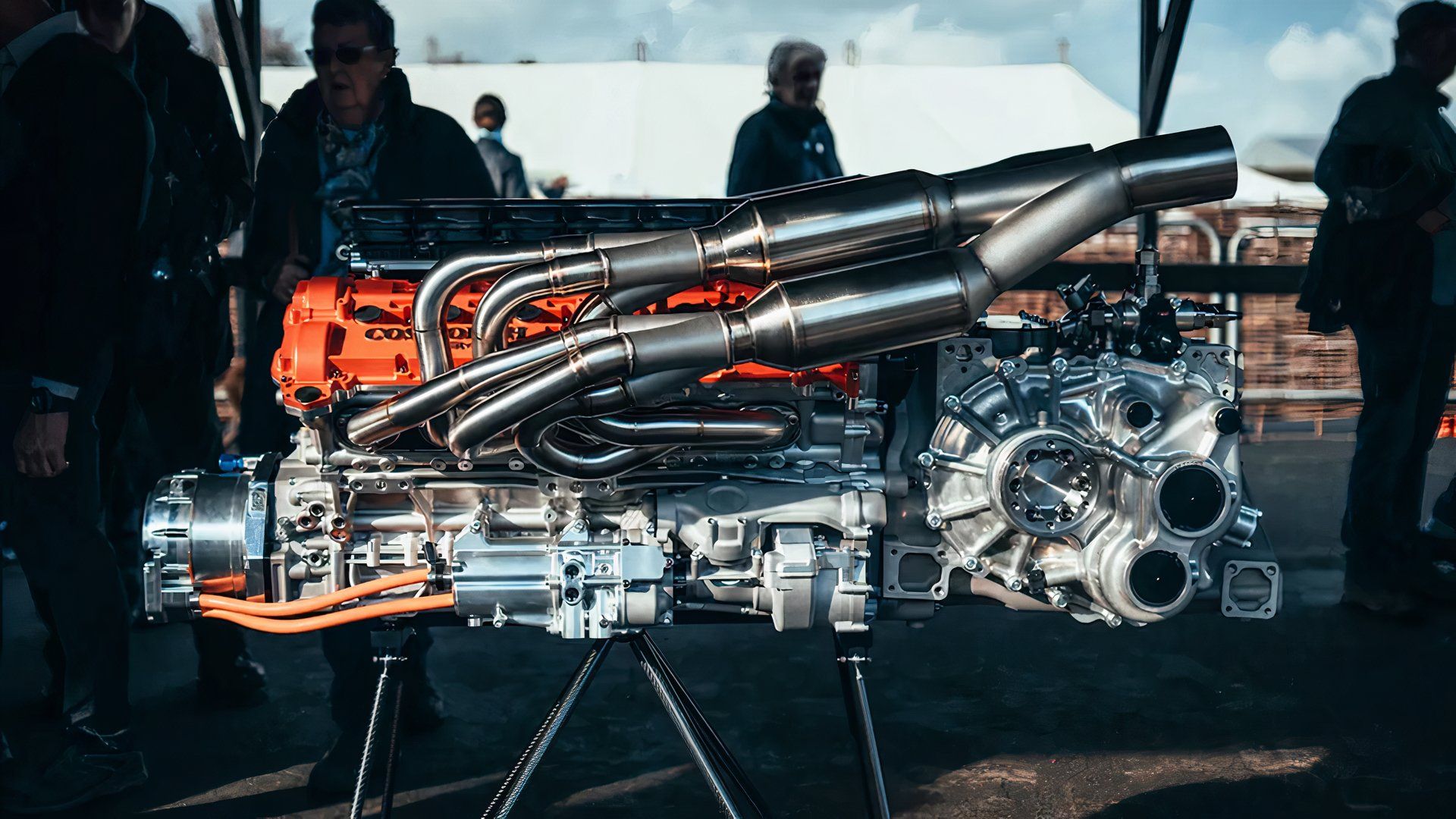An engine’s power density is an interesting aspect of a car’s powertrain and performance characteristics. Although big horsepower and torque numbers are a nice aspect of a car to gawk at, an engine’s power density reflects how hard an engine is being pushed to produce its power. Here’s a test. There are two engines. One is a 5.0-liter naturally aspirated engine producing 600 hp and the other is a 2.0-liter naturally-aspirated engine producing 300 hp. Which engine is more power-dense?
The correct answer is the 2.0-liter engine because it produces more horsepower per liter than the much larger engine despite the obvious difference in horsepower.
Related
The Most Power-Dense Production Engine In The World Comes From America
When it comes to production engines with the most horsepower per liter, it’s not Koenigsegg, Hennessey, or even Bugatti that takes top honors.
Typically, this indicates that an engine performs at a higher operating standard than an engine that is lense power-dense. Pursuing a power-dense engine typically allows for a smaller engine size that goes hand in hand with less weight, which is often optimal when an engine naturally weighs more – usually because it has a higher cylinder count. So when it comes to the dwindling number of V12s, specific output can be particularly interesting as an indicator of a motor ideal for use in sports cars and supercars. But one V12-powered road car stands head and shoulders above the rest when it comes to horsepower power liter…
The Gordon Murray Automotive T.50: Unrivaled Power Density
|
GMA T.50 |
Aston Martin Valkyrie |
Ferrari 12Cilindri |
Lamborghini Revuelto |
|
|
Engine |
3.9-liter naturally-aspirated V12 |
6.5-liter hybrid V12 |
6.5-liter naturally-aspirated V12 |
6.5-liter hybrid V12 |
|
Horsepower |
661 hp |
1,001 hp ICE (max 1,139hp) |
819 hp |
814 hp ICE (1,001 hp max) |
|
Torque |
353 lb-ft |
575 lb-ft (max 682 lb-ft) |
500 lb-ft |
535 lb-ft |
|
Hp/liter |
170 hp/liter |
154 hp/liter |
126 hp/liter |
125 hp/liter |
Gordon Murray Automotive has lauded the Cosworth-developed V12 as the greatest naturally-aspirated V12 ever equipped for a road car, and the inner workings of this power-dense engine give merit to that sentiment. Even among the upper echelons of the V12-powered segment, there are no direct rivals from other automakers, in terms of power density, that can compare to the V12 engine in the GMA T.50.
The Cosworth-GMA V12 is an astounding piece of automotive engineering. It has a higher power density than the most performance-focused V12-powered cars available in 2024. These include the space-age Aston Martin Valkyrie’s V12, also developed by Cosworth, and the sonorous V12 that powers the next generation of Ferrari’s front-engined V12 GT: the 12Cilindri.

Related
Gordon Murray Automotive Makes Moves Towards More V12 Supercars
Give the people what they want.
Even with horsepower figures eclipsing that of the V12 in Gordon Murray’s T.50, in terms of power density, the gap isn’t even close and a significant factor for the sumptuous power density of this V12 is the many intricate motorsports-inspired components found within.

Add CarBuzz to your Google News feed.
Components Maketh The Engine
Several key design aspects of the T.50’s V12 allow it to have a high power density rating alongside its other party tricks like the 12,100 rpm redline. The handcrafted 392-pound 3.9-liter V12 consists of an aluminum alloy engine block accompanied by two aluminum alloy cylinder heads to form the 65-degree V-angled engine. The engine block houses a lightweight crankshaft that affords less inertia while being extremely durable, and at the top of the motor, Cosworth has utilized lightweight camshafts. An interesting aspect of these camshafts is that they are dun-drilled, which is the process of drilling a hole from one end to the other. This method allows for the use of a thick camshaft that is more resistant to twisting but doesn’t introduce unwanted weight. Additionally, Cosworth has employed electron-beam welded hydraulic dampers at the end of the camshafts to dampen torsional vibrations.
One of the most distinguishable features of this V12 compared to other conventional V12s is the gears that drive the camshaft. To achieve the sky-high redline, Cosworth was required to employ gear-driven cams compared to the standard belt- or chain-driven cams we’ve become accustomed to on most road cars.
Gear-Driven Cams: The Best Of The Best For The Highest-Revving V12

Cosworth GMA V12 Gear-Driven Cams: Pros And Cons
- Increased precision at high RPM
- Reduced proclivity for timing variation at different engine speeds
- Increased longevity of valvetrain
- Increased cost
- Increased complexity with less margin for error
Typically, road-going vehicles rely on either a belt-driven system for the majority of passenger cars or a chain-driven camshaft system for high-end performance vehicles. Utilization of a gear-driven system is because of the strict timing and accuracy required of the T.50’s V12, characterized by its high redline, snappy throttle response, and intense operating standards. These gears avoid backlash and unwanted damage to the gears by utilizing their cush drive, which employs a quill shaft between the front and back gear that minimizes any negative forces on the gears brought on by torsion.
T.50s Niki Lauda: Track-Only T.50 Dials Up The Potency
195 hp/liter
As if the above details and figures weren’t impressive enough, the T.50’s Cosworth-GMA V12 has a more powerful and power-dense iteration that serves as the core of the non-road legal T.50s Niki Lauda.
In this configuration, the V12 produces 761 hp and 366 lb-ft, equivalent to 195 hp/liter. The T.50s is a significantly more performance-focused variation of the T.50 model and, as such, is powered by an extensively redesigned version of the Cosworth-GMA V12. The total power output is higher than the road-going T.50 and occurs later, peaking at 11,500 rpm compared to the 11,000 rpm power peak of the standard car. The increases here come not from being able to rev higher, but rather an extensive reworking of the motor to include a higher compression ratio of 15:1 compared to the regular T.50’s 14:1.

Related
Listen To The GMA T.50s Niki Lauda’s Cosworth V12 Scream Its Way Around Le Mans
It’s naturally aspirated perfection.
There are also more notable mechanical changes introduced to the T.50s’s beating heart. Instead of four throttle bodies, the T.50s relies on twelve individual throttle bodies, fed by a roof-mounted RAM induction system. The cylinder heads and lightweight camshafts have also been reworked. Weight-saving efforts have been applied to the engine and, as such, have resulted in the T.50s being 26 pounds lighter than the engine in the regular T.50.
There are no rivals to the T.50 when it comes to comparing its incredible power density to other roadgoing V12s, at least not at the time of this writing, and with hybridization taking hold, the days of extreme power density in this corner of the market may be nearing their end. If that is the case, then the T.50 is a mighty fine way to finish up the engine density war.




